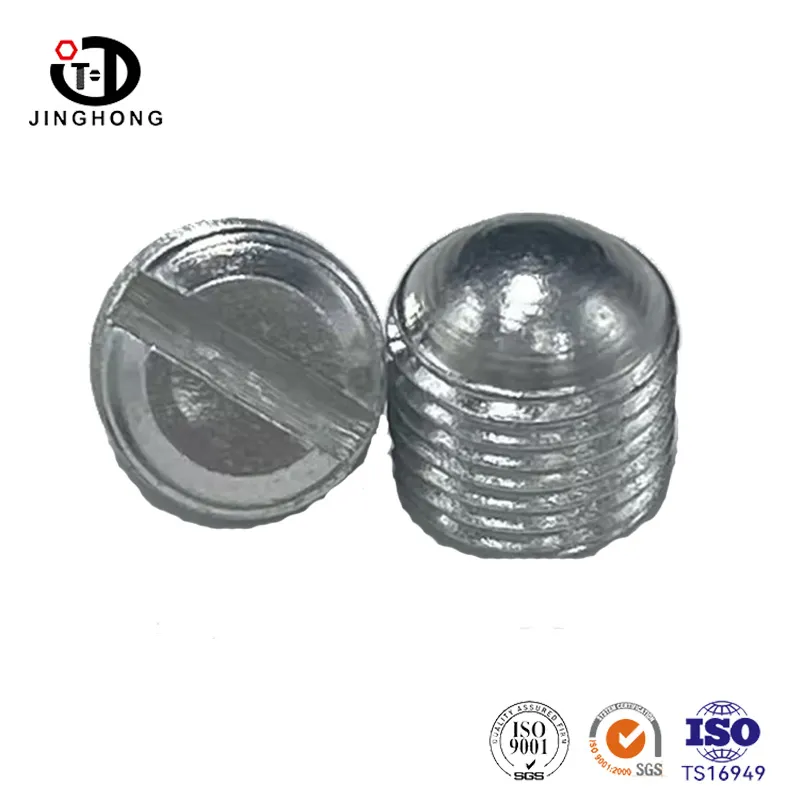How to Install, Maintain, and Maximize the Longevity of Slotted Spherical Set Screws
2024-11-08
Slotted spherical set screws are a versatile and precision-oriented fastener, but like any component, they require proper installation and maintenance to ensure longevity and performance. Knowing how to install, maintain, and troubleshoot these screws can help prevent costly issues and extend their lifespan. In this post, we’ll cover best practices for installing slotted spherical set screws, maintaining them, and troubleshooting common issues.
Step-by-Step Guide to Installing Slotted Spherical Set Screws
1. Choose the Right Screwdriver: Since these screws have a slotted head, a flathead screwdriver is typically the best tool. Ensure the screwdriver fits the slot to prevent slippage, which could damage the head.
2. Prepare the Surface: Make sure the surface or component you’re securing is clean and free of debris. Dirt or dust can prevent a tight fit, which could cause the screw to loosen over time.
3. Align the Spherical End: As you insert the screw, ensure that the spherical end makes even contact with the surface. This helps prevent uneven pressure, which could damage the surface or misalign the component.
4. Apply Steady Pressure: When tightening, apply steady pressure to avoid over-tightening. Too much force could damage delicate components, especially if they are made of softer materials.
5. Check for Proper Tightness: Once installed, check that the screw holds the component securely but allows for any necessary small adjustments. If the screw feels loose, give it a slight additional turn without over-tightening.
Maintenance Tips for Slotted Spherical Set Screws
1. Regular Inspection: Periodically inspect slotted spherical set screws to ensure they remain secure. Loose screws can result from vibration, temperature fluctuations, or general wear.
2. Apply Lubrication: In high-friction or high-temperature environments, applying a small amount of lubrication can prevent the threads from wearing out prematurely. Be careful not to over-lubricate, as this can attract dust and debris.
3. Clean the Screw and Slot: Dust and dirt can accumulate in the slot and thread over time. Use a soft brush or compressed air to remove any debris that may interfere with adjustment.
4. Protect from Corrosion: If used in outdoor or high-humidity environments, choose a corrosion-resistant material like stainless steel. Applying a light coating of anti-corrosion spray can also help protect the screws.
Troubleshooting Common Issues with Slotted Spherical Set Screws
1. Screw Slippage: If the screw tends to slip, it could be due to improper slot size on the screwdriver. Always use a screwdriver that fits the slot precisely, as a loose fit can lead to rounding off the slot.
2. Loosening Due to Vibration: In applications where vibration is common, slotted spherical set screws may gradually loosen. Consider using a thread-locking adhesive to secure the screw in place, though make sure it’s compatible with your screw material.
3. Damage to Soft Surfaces: If the spherical end is damaging the surface, it could be due to over-tightening. Loosen the screw slightly, or add a protective washer if the application allows for it.
4. Rust or Corrosion: If corrosion becomes an issue, especially in humid or outdoor settings, consider switching to corrosion-resistant materials or applying anti-corrosion coatings. Routine cleaning can also help prevent rust buildup.
Tips to Extend the Life of Slotted Spherical Set Screws
1. Choose the Right Material for the Environment: For outdoor applications, select stainless steel or another corrosion-resistant material to prevent rust and degradation.
2. Avoid Over-Tightening: Slotted spherical set screws are designed for gentle yet firm contact. Over-tightening can damage the screw or the component it’s securing, so apply only the necessary amount of torque.
3. Use Thread Locking Compound Carefully: While a thread-locking compound can be helpful in high-vibration settings, be cautious with application. Excess adhesive can make future adjustments difficult or damage the threads.
4. Replace Worn Screws Promptly: Over time, threads can wear out, or the slot can become stripped. Replacing worn screws ensures the fastener continues to perform effectively without risking the component’s integrity.
Practical Applications to Consider
1. Precision Electronics and Instruments: In electronics where alignment and vibration damping are crucial, these screws provide reliable fastening without affecting sensitive components.
2. Camera and Optics: The spherical end helps maintain the delicate positioning needed in optical devices, preventing shifts while still allowing for micro-adjustments.
3. Machine Tooling: For applications involving repeated motion or vibration, slotted spherical set screws provide a balance of stability and flexibility without damaging surrounding surfaces.
Slotted spherical set screws offer a unique advantage in applications where delicate surfaces, slight adjustments, and minimal surface damage are required. With proper installation, regular maintenance, and a few best practices, these screws can provide years of reliable service. Whether in electronics, optics, or heavy machinery, slotted spherical set screws are a versatile and precision-oriented solution for a wide range of fastening needs.



